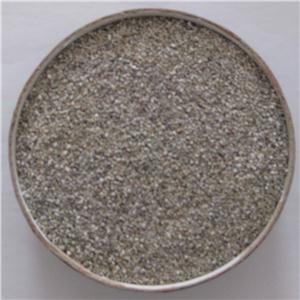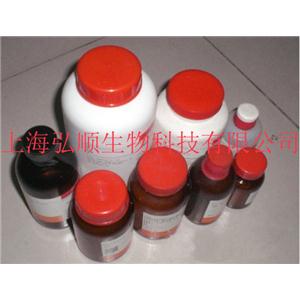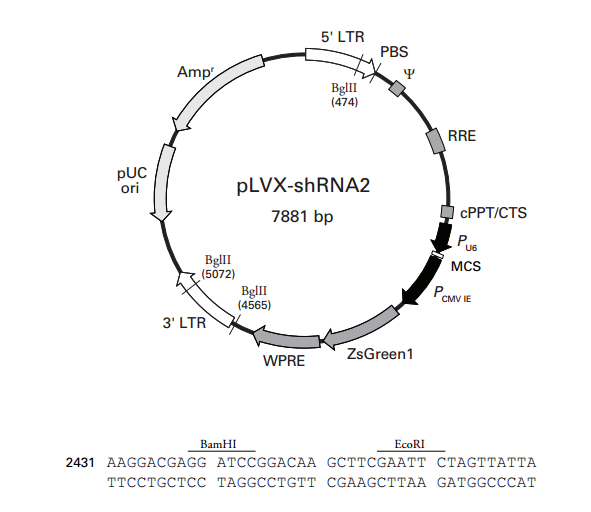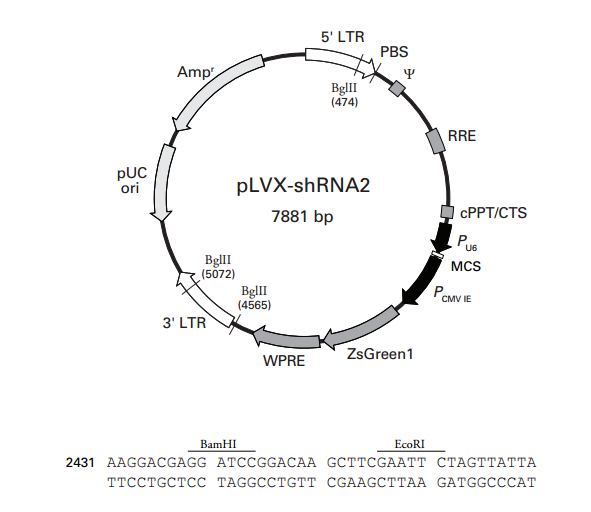pLVX-shRNA2 is an HIV-1-based, lentiviral expression vector designed to express a small hairpin RNA (shRNA) for RNA interference (RNAi) studies. Expression of your shRNA is driven by the RNA Pol III-dependent, human U6 promoter (PU6), located just upstream of the MCS. pLVX-shRNA2 can be used as a plasmid expression vector and transfected into cells, or it can be packaged into viral particles and transduced into cells. Lentiviral particles derived from the vector allow the expression of shRNAs in virtually any cell type, including primary cells.
In addition to expressing shRNAs, pLVX-shRNA2 also expresses the fluorescent protein ZsGreen1, a human codon-optimized variant of the reef coral Zoanthus sp. green fluorescent protein, ZsGreen (1). Expression of ZsGreen1 is driven by the constitutively active human cytomegalovirus immediate early promoter (PCMV IE), allowing it to be used as an indicator of transfection or transduction efficiency, as well as a marker for cell sorting.
pLVX-shRNA2 contains all of the viral processing elements necessary for the production of replication-incompetent lentivirus, as well as elements to improve viral titer and overall vector function. The woodchuck hepatitis virus posttranscriptional regulatory element (WPRE) promotes RNA processing events and enhances nuclear export of viral RNA (2), leading to increased viral titers from packaging cells. In addition, the vector includes a Rev-response element (RRE), which further increases viral titers by enhancing the transport of unspliced viral RNA out of the nucleus (3). Finally, pLVX-shRNA2 also contains a central polypurine tract/central termination sequence element (cPPT/CTS). During target cell infection, this element creates a central DNA flap that increases nuclear import of the viral genome, resulting in improved vector integration and more efficient transduction (4). The vector also contains a pUC origin of replication and an E. coli ampicillin resistance gene (Ampr) for propagation and selection in bacteria.
载体应用
Before pLVX-shRNA2 can be transduced into target cells, the vector must be cotransfected into 293T cells with our Lenti-X™ HTX Packaging System (Cat. Nos. 631247 and 631249) and packaged into viral particles.This packaging system allows the safe production of high titer, infectious, replication-incompetent, VSV-G pseudotyped lentiviral particles that can infect a wide range of cell types, including non-dividing and primary cells (5).
ZsGreen1 is the brightest commercially available green fluorescent protein. The presence of this protein allows transductants to be sorted by flow cytometry with standard FITC filter sets (ZsGreen1 has an excitation maximum of 493 nm and an emission maximum of 505 nm).






